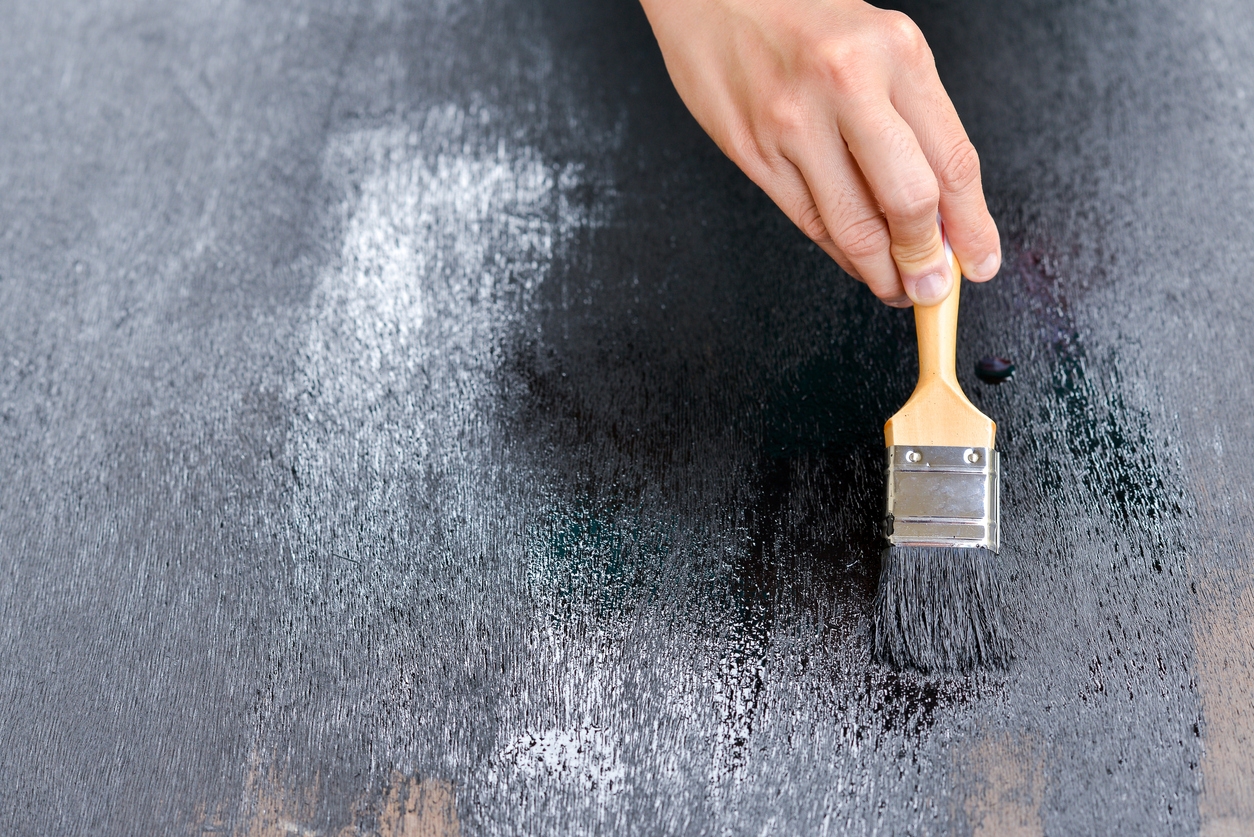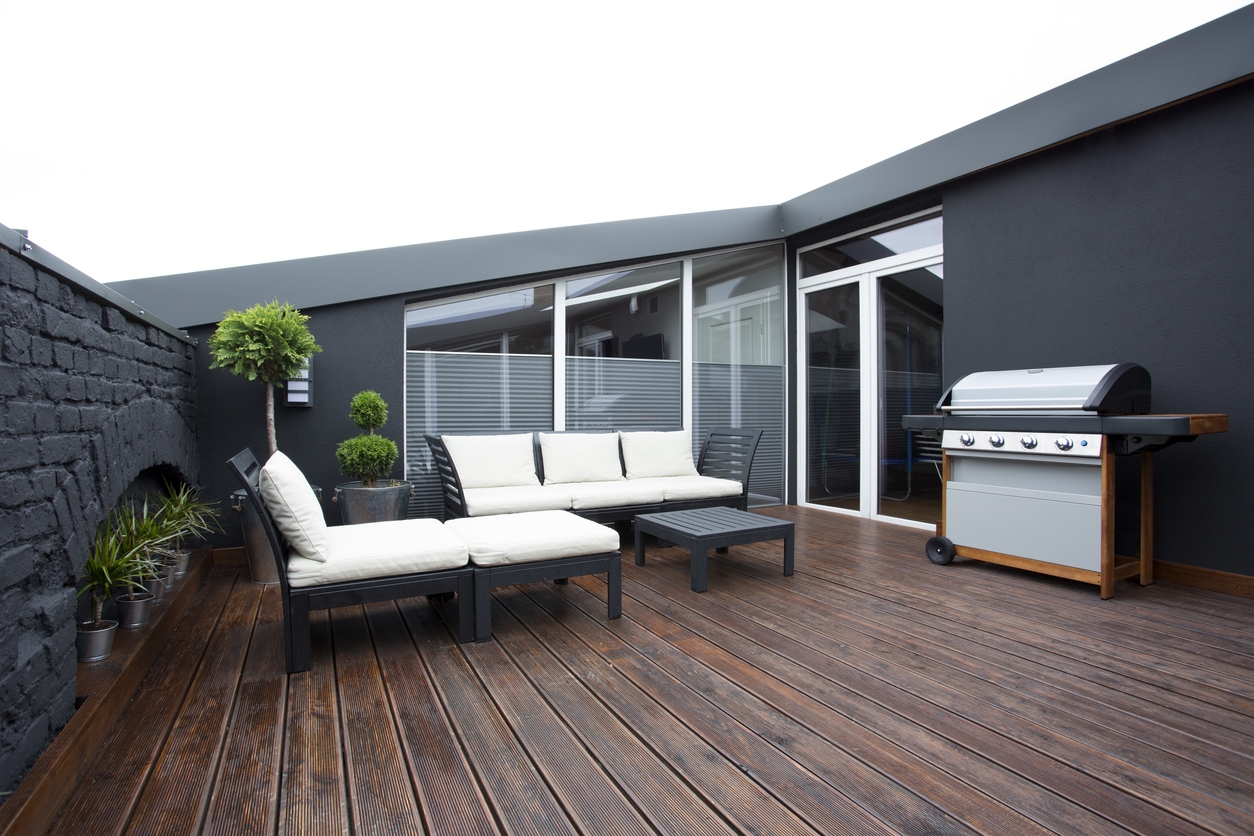Do you want to re-decorate your room with dark paint colors but are concerned about them fading soon?
This article explores dark paint colors’ appeal in modern interior and exterior design, highlighting their ability to create dramatic, sophisticated, and contemporary spaces. It emphasizes the importance of understanding paint durability to ensure long-lasting aesthetic appeal and practical functionality.
You’ll also find a brief overview of factors affecting paint fading. They include UV exposure, pigment quality, and environmental conditions. These factors are crucial for maintaining the vibrancy and longevity of dark paint finishes.
The science behind paint fading
Fading is one of the usual paint issues. Here are some factors that contribute to paint fading.
Explanation of paint composition
1. Pigments:
- Pigments are finely ground particles that provide color and opacity to the paint. They can be organic (carbon-based) or inorganic (mineral-based).
2. Binders:
- Binders, also known as resins, hold the pigment particles together and provide adhesion to the painted surface. Common types include acrylic, alkyl, and epoxy resins.
3. Solvents:
- Solvents dissolve the binders and pigments, creating a liquid that can be easily applied. They evaporate as the paint dries, leaving behind the solid paint film. Examples include water (in water-based paints) and organic solvents (in oil-based paints).
The role of UV radiation in paint fading
UV radiation from the sun is a major cause of paint fading. UV light breaks down the chemical bonds in the pigments and binders, causing them to degrade. This process, known as photodegradation, leads to a loss of color intensity and can weaken the paint film, making it more susceptible to further damage.
Other environmental factors influencing fading
1. Weather conditions:
- Rain, wind, and snow can physically wear down the paint surface. Water can cause hydrolysis, breaking down the binders, while wind can carry abrasive particles that erode the paint.
2. Pollution and contaminants:
- Airborne pollutants, such as soot, dust, and chemicals, can settle on the paint surface and cause chemical reactions that degrade the paint. Acid rain, resulting from atmospheric pollution, can be particularly damaging.
3. Humidity and temperature fluctuations:
- High humidity can lead to moisture absorption by the paint, causing swelling and blistering. Temperature fluctuations cause expansion and contraction of the paint film, leading to cracking and peeling. Extreme temperatures can accelerate the degradation of both pigments and binders.
Dark paint colors: myth vs. reality
Common misconceptions about dark paint colors
They make rooms look smaller and darker
A prevalent belief is that dark paint colors will make a room feel cramped and less inviting. However, dark colors can actually add depth and make a space feel cozy and sophisticated.
They are difficult to maintain
Many think dark colors show dirt, dust, and imperfections more easily. In reality, dark colors can sometimes hide minor imperfections better than light colors.
They are limited to certain styles
There’s a misconception that dark paint colors are only suitable for certain design styles, such as gothic or industrial. Dark colors can be versatile and work well in various styles, including modern, traditional, and eclectic.
Too bold or overwhelming
Some believe dark colors are too intense for large areas or entire rooms. When balanced with appropriate lighting and décor, dark colors can create a dramatic and elegant look without being overpowering.
Comparison of fading rates between dark and light colors
Fading of dark colors
Dark paint colors tend to fade faster than light colors when exposed to sunlight. It happens because dark colors absorb more UV radiation, which breaks down the pigments in the paint more quickly.
Fading of light colors
Light colors reflect more sunlight and, as a result, experience slower fading. However, they are not immune to fading, especially if exposed to direct sunlight over prolonged periods.
Quality of paint
The rate of fading for both dark and light colors can be significantly influenced by the quality of the paint and the presence of UV-resistant additives.
Location and exposure
The specific environment, such as the amount of direct sunlight and weather conditions, is also crucial in how quickly paint colors fade. South-facing walls or areas with intense sun exposure will see more noticeable fading.
Understanding these aspects can help make more informed decisions about paint colors for different spaces and purposes.
Factors affecting the fading of dark paint
Quality of paint and pigment concentration
Higher-quality paints with concentrated pigments are more resistant to fading. Superior binders and UV-resistant pigments help maintain color integrity over time.
Application techniques and surface preparation
Use proper application techniques, such as correct coating amounts, even coverage, and thorough surface prep. These can improve paint durability and prevent fading.
Protective coatings and sealants
Protective coatings and sealants can shield the paint from UV rays, moisture, and other environmental factors, significantly reducing the fading rate.
Maintenance and upkeep practices
Regular maintenance – such as cleaning the painted surface and addressing damage promptly – helps maintain the paint’s appearance and prevents premature fading.
Choosing the right dark paint
When choosing the right dark paint, consider the brand and the quality of the paint itself.
Evaluating paint brands and products
- Reputation and reviews: Look for brands with favorable reputations for durability and quality. Check customer reviews and expert opinions.
- Range of shades: Choose a brand that offers a wide range of dark shades to find the perfect color.
- Finish options: Ensure the brand offers the finish you need (matte, satin, gloss, etc.) for your project.
- Price vs. quality: Higher-priced paints often offer better coverage and longevity, making them more cost-effective in the long run.
Importance of UV-resistant and high-quality pigments
- UV resistance: UV-resistant pigments prevent fading and discoloration when exposed to sunlight, maintaining the paint’s vibrancy over time.
- Durability: High-quality pigments provide better coverage, require fewer coats, and offer long-lasting color.
- Appearance: Superior pigments ensure a richer, more uniform color, enhancing the overall aesthetic of the painted surface.
- Environmental factors: Quality pigments can withstand various environmental conditions, reducing the need for frequent repainting.
Choosing the right dark paint involves balancing these factors to achieve a durable, vibrant, and long-lasting finish.
Tips for extending the life of dark paint colors
To extend the life of dark paint colors, follow these tips:
- Regular cleaning: Clean surfaces gently using a soft cloth or sponge and a mild detergent to remove dirt and grime. Avoid abrasive cleaners that can damage the paint.
- Applying protective coatings: Use protective coatings like clear varnishes or sealants to shield the paint from UV rays, moisture, and other environmental factors that can cause fading and wear.
- Proper surface preparation before painting: Prepare the surfaces correctly by cleaning, sanding, and priming them before applying the paint. Doing so helps the paint adhere better and last longer.
Conclusion
Dark paint colors, while visually striking, tend to show imperfections and signs of wear faster than lighter shades. They may also fade more quickly under UV exposure. Therefore, choose high-quality paint and do proper maintenance to preserve their appearance over time.
When selecting paint colors, consider factors like sunlight exposure, weather conditions, paint quality, application, and maintenance requirements. You can test paint samples and research durability and performance for satisfying, lasting results. Choose colors wisely to enhance your space.
Custom Painting, Inc. offers free color consultation services. Our team will provide color suggestions and combinations to suit your home’s location, decor, and architecture. We can help you pick the colors with confidence. Call us at 925-294-8062 or complete our contact form. We look forward to working with you!



